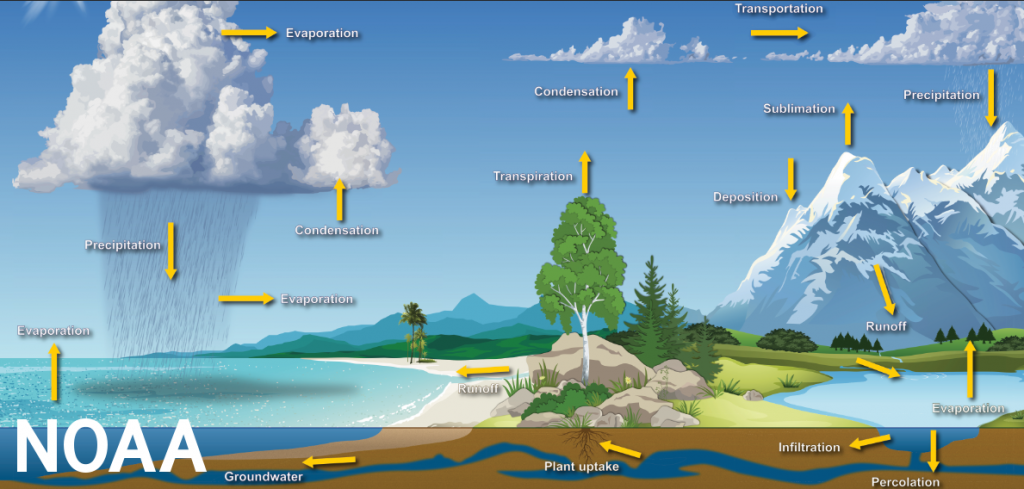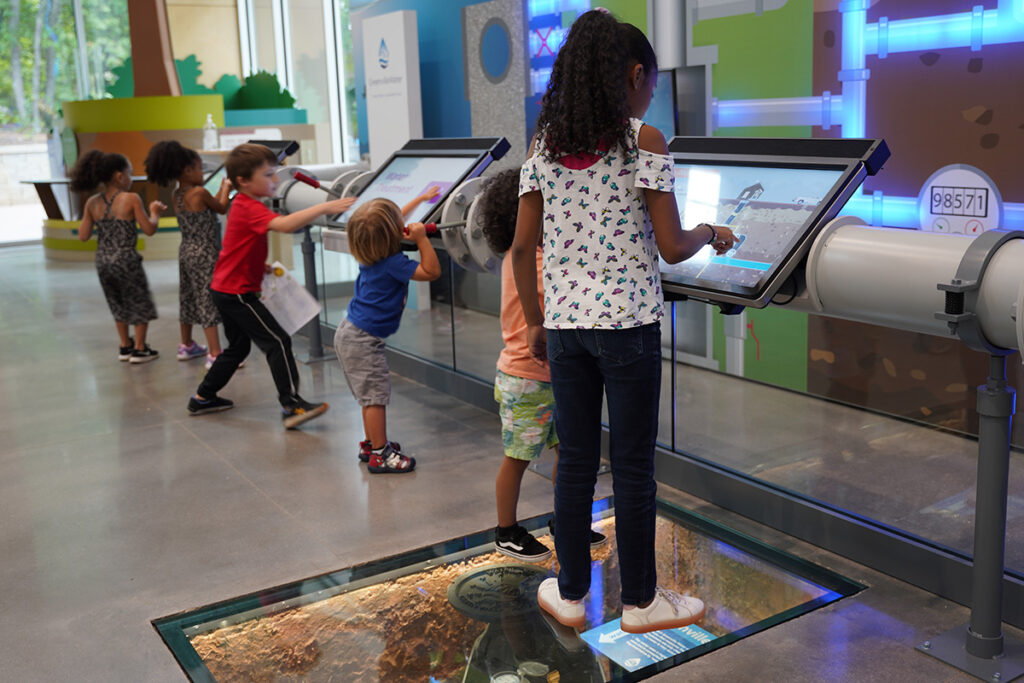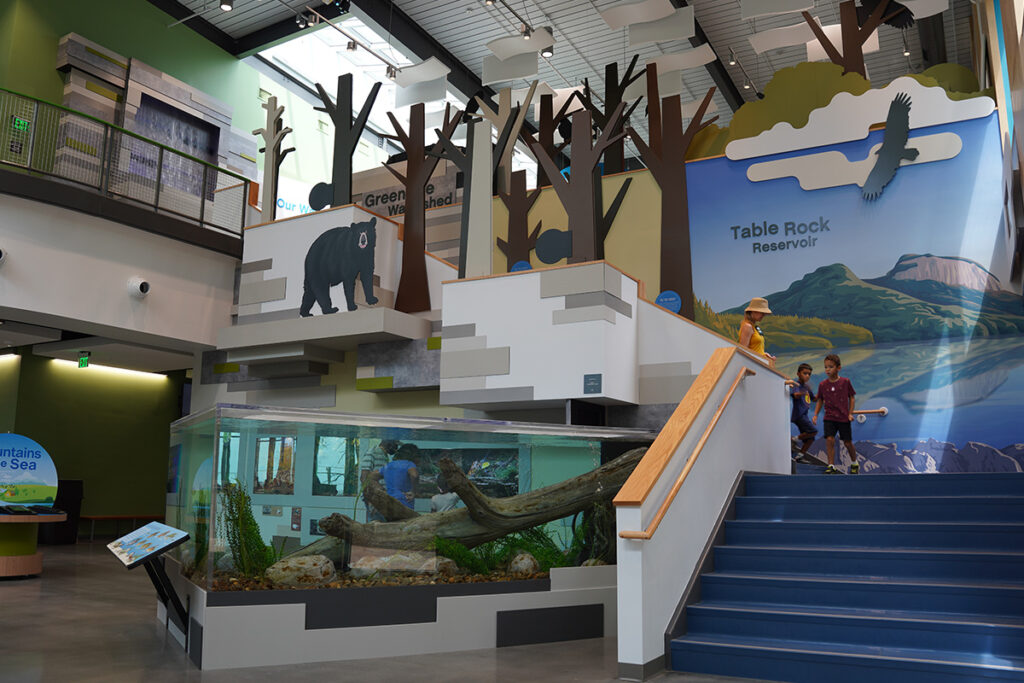Evaporation, Condensation and Precipitation
You might remember being taught the basics of the water cycle at school: Evaporation to condensation to precipitation and back again. You might even remember making your own cloud in a jar to help you visualize the cycle (see Fig. 1). While this three-part description is a good start, the water cycle as it moves through natural systems is actually far more complicated. Add human intervention and built structures to the mix, and you have got a maze of interconnected systems that water cycles through each and every day.
Fig. 1. Water Cycle in a jar, by The Experiment Archive.
A Delicate Balance
Unfortunately, part of the water cycle today involves encounters with a slew of pollutants, including lead, heavy metals, PFAS (also known as “forever chemicals”), fertilizer, litter and more. All of these contaminants can effect the environment and public health. For example, it is well-known that lead in water can cause damage to the brain, kidneys and red blood cells. PFAS, too, have been linked to health issues such as cancer, reproductive and immune systems harm, and liver disease. Litter, or “aquatic trash,” can disrupt wildlife habitats and can be ingested by animals, causing suffocation, starvation and drowning. Understanding the delicate balance of the water cycle — and what we can do to prevent its disruption — is a first step in protecting our environment and our health.
The Natural Cycle
Evaporation, condensation and precipitation are the most basic elements of the natural water cycle. However, a whole lot more happens in between each of these steps (see Fig. 2). For example, water might first collect in the mountains as ice or snow. It could remain there indefinitely as hard snow pack, or it could melt and travel down the mountain as runoff before it enters a river or percolates into the earth’s crust. From there, it might travel through groundwater systems, where it might remain indefinitely, or where it might seep up through springs to be drunk by animals or be taken up by the roots of plants and trees. It will then re-enter the cycle when the animal urinates or when plants release water vapor in order to cool themselves — a process called “transpiration.” The water from the urine might rejoin a ground or surface water system, while the transpired water might join other evaporated water in the sky before condensing into clouds, then transforming back into a solid form as water, snow or ice. In the meantime, we have fog drip, ocean vents, volcanoes and other natural phenomena to contend with. And this is only one set of possibilities within the natural water cycle!

Human-Made Detours
On the human-made side of things, there is a whole new set of complications in the cycle. Water is extracted from its source to be used for agriculture and industry, to shower or bathe, to nourish and sustain our bodies, to wash our clothes and other items, and sometimes simply for play in sprinklers and pools. Damns, reservoirs, river and stream-redirection, wells, industrial irrigation, sewer and stormwater systems, and more all disrupt the natural flow of the water cycle, creating new and different ways that water travels, is collected, is ingested by plant, animal and human life, and is released back into the atmosphere.
In areas populated by humans, for example, water from precipitation might run through city streets and be directed toward stormwater drains, where it then runs through underground pipes to the nearest water source — a creek, river or stream, for example. From there, it might flow into a lake, ocean or reservoir.
Fig. 3. “The Human Water Cycle: Drinking Water and Wastewater Treatment” by NV at CEPImperial.
In our homes, the majority of our used water cycles through septic or sanitary sewer systems prior to being introduced back into a nearby body of water. The water you wash with, the water you launder with, and water you drink and then expel all goes down our drains as “gray” or “black” water (gray is what goes down the kitchen, bathroom and laundry drains, black is what goes down the toilet, contaminated with human waste). If you are on a sewer line (rather than a septic tank), the used water travels through the pipes attached to your home (your sewer lateral), to sanitary sewer collection pipes operated by your wastewater district (MetroConnects handles most of the collection pipes in Greenville County), to main pipes operated by your wastewater treatment facility (ReWa handles most wastewater treatment in Greenville County), to the water resource recovery facility (WRRF) or treatment plant where it is finally cleaned and released back into the nearest water source, continuing on its water cycle journey. (See Fig. 3, “The Human Water Cycle: Drinking Water and Wastewater Treatment” for an excellent primer on human interaction with water cycles and the role of wastewater systems.)
Keeping the Cycle Safe
No matter the path that water travels, it is likely to pick up pollutants and litter along the way. Not only do litter and pollutants contaminate water where it collects, but they also can enter into the atmosphere through evaporation and contribute to air pollution. For example, “volatile organic chemicals” (VOCs) such as Benzene (found in products like adhesives, cleaning products, gas, and paint thinner), which can increase risks for cancer, can evaporate into the atmosphere, and unsafe levels of PFAS have been detected in rainwater throughout the globe. Some simple yet important ways to keep our water cycle safe are to make sure you put trash where it belongs — in a trash can or recycling bin — and limit the number of chemicals and pollutants that enter the water stream. Choose sewer-safe cleaners for your home, avoid harsh chemicals like Drano for clearing your drains, forego synthetic fertilizers in the garden, never send motor oil down the storm drain, and keep unflushables out of your toilet (remember the three P’s — only toilet paper, pee and poop can be flushed). Check out MetroConnects’ blog for more tips on keeping our water cycle safe. And sign up for our newsletter to keep up with the latest!
Roper Mountain Water Cycle Exhibit
You are never too young or too old to become a water steward. Learn more about the water cycle and how to better protect our most precious resource at Roper Mountain Science Center’s “Our Water Story” exhibit. Created in partnership with MetroConnects, ReWa and Greenville Water, the exhibit provides an immersive experience that helps visitors to visualize the process of the water cycle in Greenville County’s watershed. The exhibit includes a waterfall, a “transpiration tree,” and a “water utility wall,” among other activities. Visit www.ropermountain.org to learn more!

